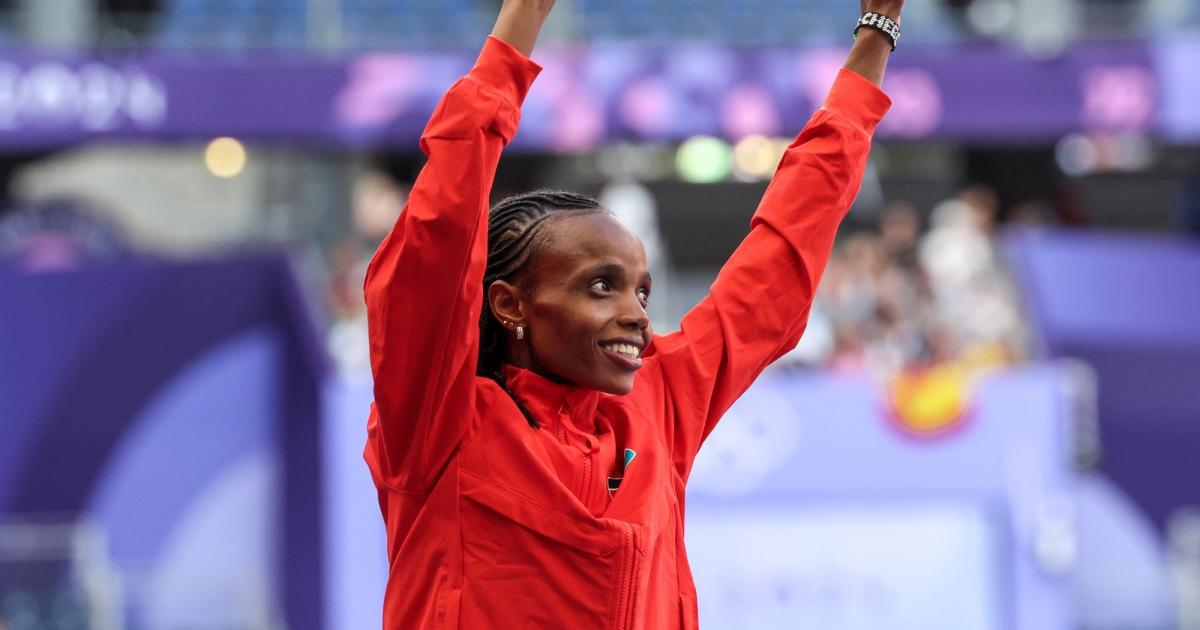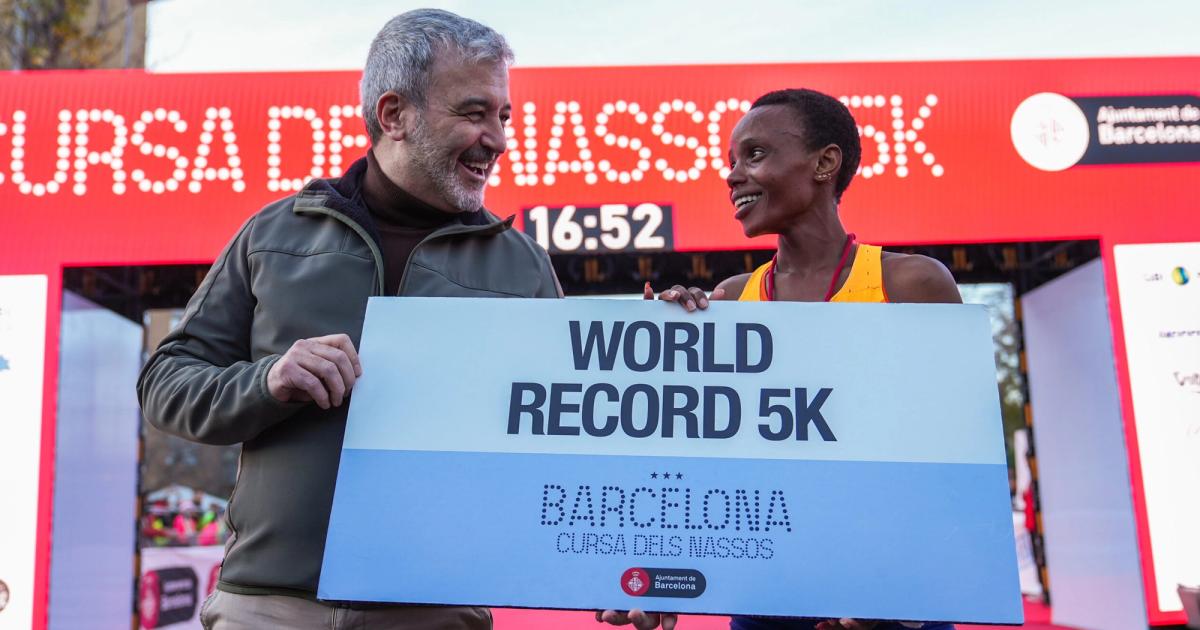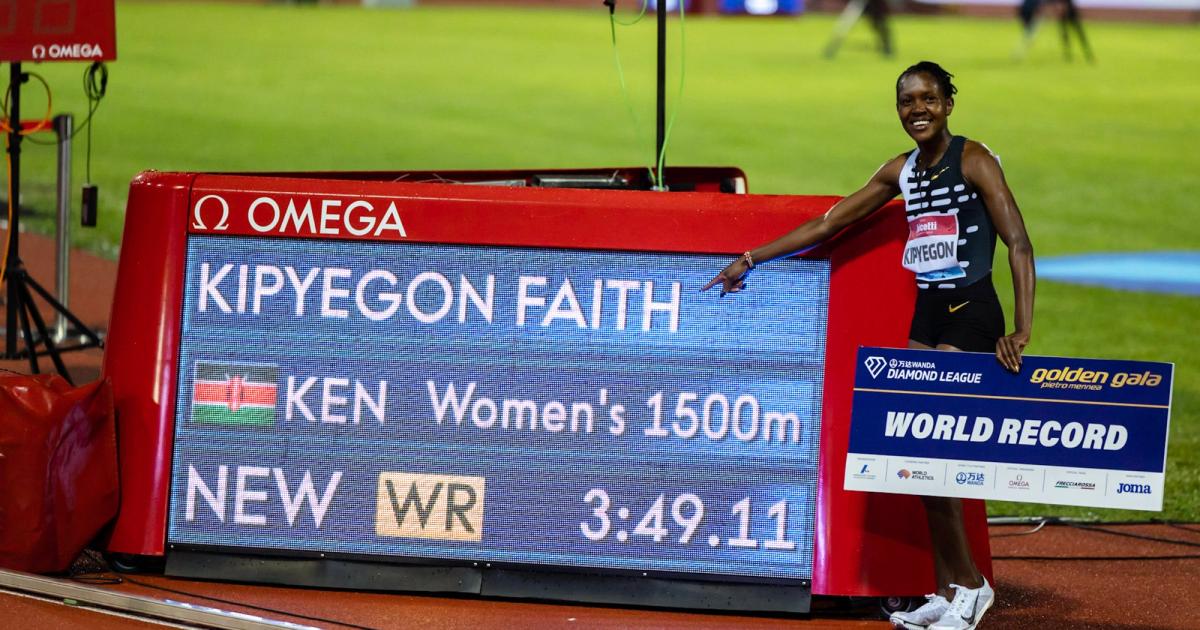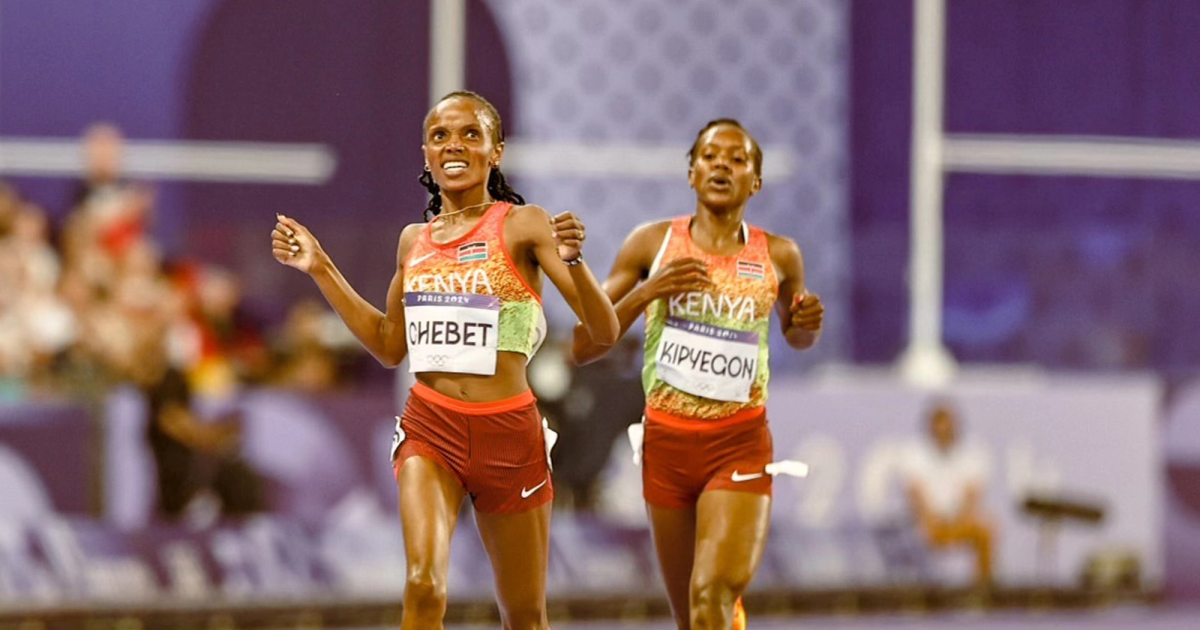By Paul Snyder
January 8, 2025
Last week at the Cursa dels Nassos 5k in Barcelona, Beatrice Chebet finished the year on a high note by covering 5 kilometers on the roads in a blistering time of 13:54. That’s the new women’s 5K world record and was clearly one hell of a run. It’s also a saucy reminder that Chebet’s failure to even be named a finalist for Athlete of the Year was a ridiculous snub. But is it earth shattering? Paradigm shifting? A “remember where you were when you heard about it” performance?
When we wrote the above headline, it was in the interest of clickbait. But after a few seconds of half-assed consideration… maybe it’s a fair question? Hold on. Let’s talk this through.
On first pass, it seems like the performance of the year! Chebet lopped off nearly 20 seconds from the old mark of 14:13, which she set at this race last year and which had only been matched (to the second) by Kenyan compatriot Agnes Ngetich a few weeks later. That’s a lot of time to be erased from a WR, especially over a shorter, non-marathon distance. So it stands to reason that Chebet’s 5K should be viewed with awe as a significant historic outlier, right? Not exactly.
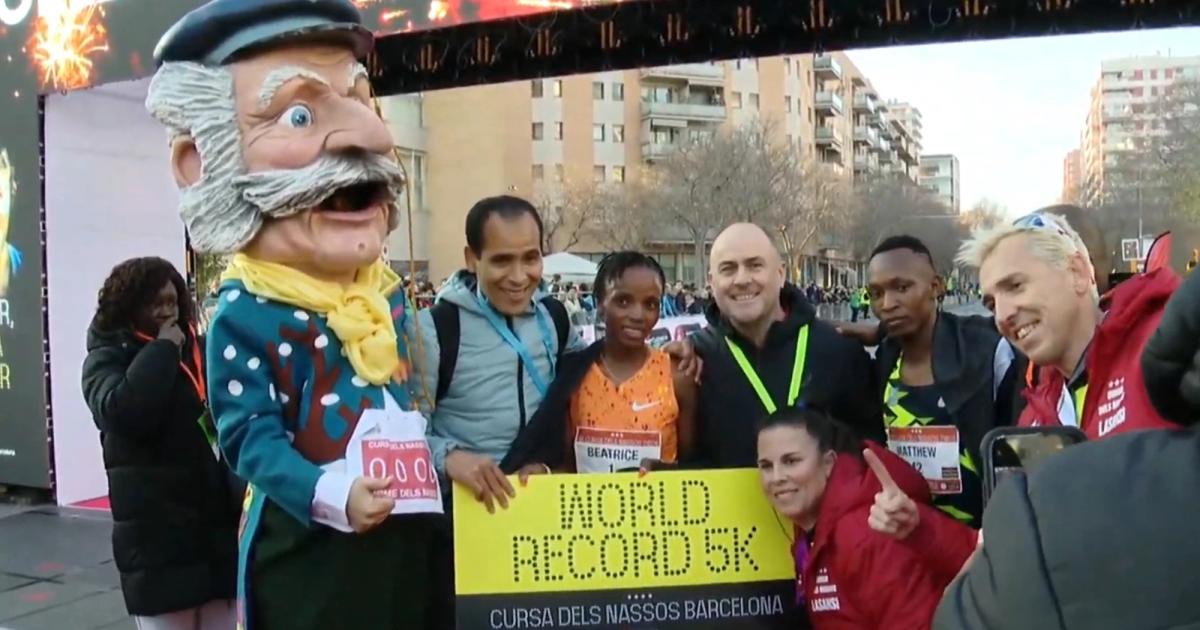
For starters, it’s felt like we’ve been just one more pace-light-lit race away from seeing the first sub-14 women’s 5000m for a few years now, ever since Gudaf Tsegay ran 14:00.21 at Pre two summers ago. Tsegay might be the WR holder and 2022 World champ, but Chebet, Faith Kipyegon, and Sifan Hassan have all beaten her in a range of races. And remember: Ngetich split 14:13 en route to her astounding 28:48 10K world record run (The 10K world record has a higher WA score than the 5k world record by eight points, for what that’s worth). And although road 5Ks have been around much longer than World Athletics, the organizing body only started ratifying official world records at the distance off the track in 2017.
Conventional wisdom states that the track should be faster than the roads. You’re wearing space-age spikes on a perfectly flat surface and cruising around a well-marked oval that is designed to optimize an athlete’s ability to ration effort over the course of the race. That’s the established recipe for fast running. And yet…28:48 is six seconds faster than Chebet’s 10,000m world record, 28:54.14.
Ngetich broke 29 minutes on the roads about five months before Chebet did so on Mondo, so if anything, perhaps the way to view short-distance road world records is as a harbinger of track times to come. Maybe the relatively free-wheeling flow of road running (plus 39+ millimeters of bouncy foam and carbon underfoot) helps to make barriers seem more breakable, and a monster time registered on asphalt helps rewire the collective notion of what’s possible on the track.
If that’s how you choose to evaluate Chebet’s 5K WR, that’s just fine! Feel free to take it a step further and imagine a grandfather clock tick-tick-ticking in your head—Tsegay’s 5000m world record is on notice and should be lowered to something like 13:57 by May of this year. Whoever accomplishes this inevitable feat will receive greater fanfare than Chebet has received for her 5K performance. It’ll also likely slot neatly into a larger 2025 narrative. If it’s Chebet, she’ll continue her march toward GOAT conversation and solidify her status as distance-double favorite in Tokyo. If it’s not Chebet, and she’s not in the race, it ratchets up the anticipation of a head-to-head clash. And if Chebet gets beat, it creates a thrilling uncertainty heading into championship season.
Then there’s the nuclear option, which is that we should do away with the very notion of recording “world records” for road races under the half marathon distance. These 5K and 10K races—even with World Athletics course requirements—are too weird and idiosyncratic to really mean much. And they’ll always be compared to their much more frequently contested counterparts on the track. Shorter road races are fun and exciting, but rarely because of the time on the clock—just ask the Fifth Avenue Mile.
But even embracing this more curmudgeonly stance doesn’t erase the sub-14-sized elephant in the room. Even the “times don’t matter” crew have to admit that there’s something different about Chebet running 13:54 than, say, a still-large world record of 14:04. So perhaps you’ll look to contextualize it, rather than hold it up like some just-uncovered artifact with which track nerds can divine the future.
How about this? Chebet won in Barcelona by about 30 seconds over second-placer Medina Eisa of Ethiopia, who boasts a track 5000m PB of 14:16.54 and placed second (again to Chebet) at last year’s Diamond League 5000m final. Does that mean Chebet is set to run 13:46 at Pre this year? We doubt it, but let’s go ahead and set that as the upper-most bound of what she can conceivably do this outdoor season.
And keep in mind: Chebet, who’s running into her prime at 24 years old, has a lifetime 1-2 record against Faith Kipyegon head-to-head. The most recent win was, to be fair, the Olympic 5000m final, but Kipyegon did beat her in Budapest and at the Kenyan Trials earlier last year. Since 2023, Kipyegon has run five 5000m finals and only lost one, in a year that began with an injury and included a mid-race shoving match. As recently as 18 months ago, Kipyegon became the world record holder at the distance in her third-ever 5000m. So maybe what Chebet’s mark means is that two women are conceivably in well-under-14-minute shape.
Clickbait-y headlines are infinitely more annoying when the question is left unanswered. So to reiterate: how much should we care about this world record? Let’s go with “some.” And the biggest takeaway from Chebet’s New Year’s Eve antics is that the women’s 5000m will be a can’t-miss event in the year to come.

Paul Snyder
Paul Snyder is the 2009 UIL District 26-5A boys 1600m runner-up. You can follow him on Bluesky @snuder.bsky.social.
